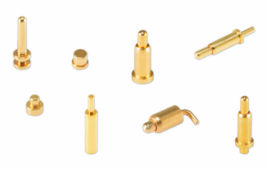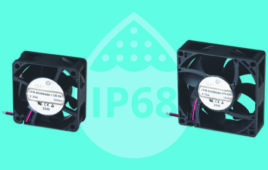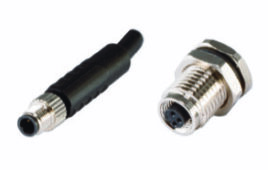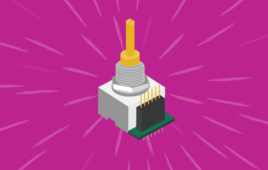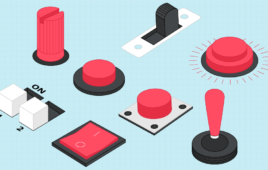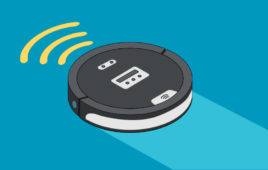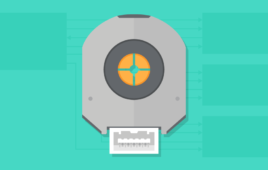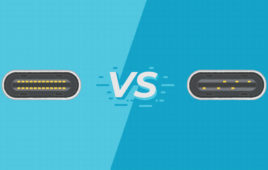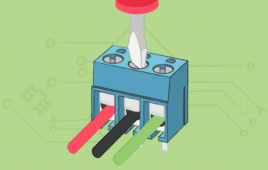CUI Devices’ Interconnect Group announced the addition of pogo pins and PCB pins to its connectors product portfolio. The CPG family of pogo and PCB pins offers gold-plated contacts for high reliability as well as a variety of pin sizes and configurations to meet an array of interconnect needs. CUI Devices’ line of pogo pins features…
A guide to USB standards from 1.0 to USB4
The evolution of USB standards has been instrumental in shaping the landscape of modern computing and connectivity. From the basic functionality of USB 1.0 to the enhanced capabilities of USB4, each iteration has brought significant improvements in data transfer speeds, power delivery, and device compatibility. As a result of USB’s rapid advancement, the constantly changing…
CUI Devices expands DC axial fan line with IP68-rated waterproof models
CUI Devices’ Thermal Management Group announced the addition of IP68-rated fan models to its line of DC axial fans. These waterproof DC fans offer complete protection against moisture and dust, making them ideal for a range of harsh environments such as refrigeration, HVAC, medical, and more. The IP68-rated fans feature dual ball bearing construction, square frame sizes of…
CUI Devices launches M5 circular connectors and cable assembles for harsh environments
CUI Devices’ Interconnect Group announced the addition of M5 connector types to its line of circular connectors and circular cable assemblies. The CDM5 family offers a range of male or female jack or plug versions with contact position options of 3 or 4 pins. These M5 connectors and cables are all A-coded to support 1 Gbit…
Intro to panel mount encoders
In the domain of electrical engineering, panel mount encoders play a pivotal role in precision measurement and control systems, influencing the performance and accuracy of a diverse range of applications. Panel mount encoders fall under the category of rotary encoders. These devices are physically affixed to panels and find primary utility in human interface applications. […]
A comprehensive exploration of IEC 60601-1-8 for medical alarm systems
In the intricate web of healthcare technology, the seamless integration of medical alarm systems plays a pivotal role in ensuring patient safety and the efficient functioning of medical equipment. Due to the mission-critical nature of these medical alarms, it should come as no surprise that additional regulations govern them, specifically IEC 60601-1-8—a standard that delineates…
Switches: The complete guide
From DIP, rotary DIP, and slide switches to tactile, rocker, push button, and toggle switches, there is a nearly limitless range of mechanical switches differing in size, shape, interfaces, and features. Although a relatively basic component in electronic design, each switch type has its benefits, drawbacks, and ideal use cases. Because all switches serve a…
Analyzing different proximity sensor technologies
Utilized as a no-touch method to provide either precise distance measurement to an object or simple “there/not there” logic, proximity sensors span a wide range of technologies, each offering their own set of operating principles, advantages, and drawbacks. Some of the most commonly found technologies in portable or small embedded systems include ultrasonic, photoelectric, laser…
An overview of absolute encoder communication protocols
Depending on the application, a controller or variable-speed electric-motor drive may need to measure any combination of rotor speed, position, and direction. Absolute encoders are a popular motion control choice with their ability to determine rotor position immediately at power on, while also being able to keep track of position during sudden power losses. With…
A look at USB Type-C in power-only applications
Having been around for more than two decades, USB connectors are one of the most popular and well-recognized interconnect components in electronic designs. From Type A to Type-C, USB has gone through an array of changes both in terms of the physical connector as well as their associated standards. USB Type-C is the most advanced…
Terminal block selection guide
Terminal blocks, often called connection terminals or screw terminals, provide secure wire-to-board or wire-to-wire connections in a range of end applications. While a relatively straightforward component by their very nature, terminal blocks still have a number of design considerations to take into account. Key mechanical specifications like the wire-entry orientation, wire-securing method, and module type…

